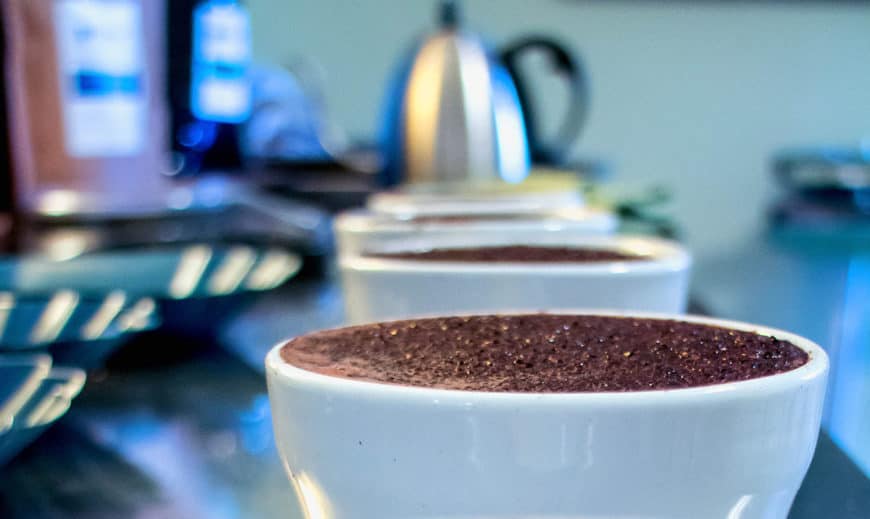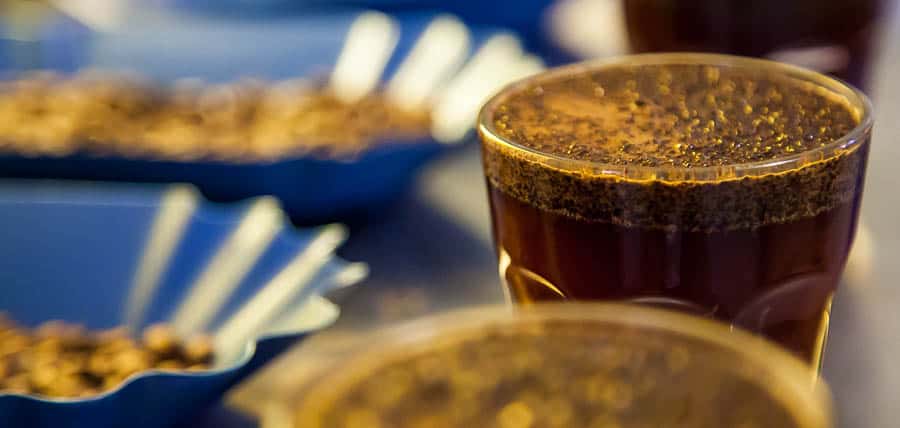
Coffee cupping is a technique used to evaluate the quality and taste of coffee beans. It’s a great way to experience the unique flavors and aromas of different coffee blends and to develop a palate for coffee tasting. And the best part is, you can easily do it at home!
With just a few simple tools and some freshly roasted coffee beans, you can create a coffee cupping experience right in your own kitchen.
Whether you’re a coffee fanatic or just looking to up your home brewing game, coffee cupping is a fun and educational activity that everyone can enjoy. So, gather your supplies and let’s get started!
Why Cup Coffee at all?
Cupping is done to determine the types of coffee that customers can add on their favorite list. Even for amateur coffee tasters, the process helps to learn the distinct differences among coffees before adding milk and sugar. The process could also be solely for the nosy to satisfy their coffee curiosities.
Coffee Cupping is a foolproof way to learn more about flavor, texture, aroma, and to share that with people that matter – friends, family or customers. Most coffee houses today cup every type of coffee that they roast. That is why they have employed baristas who they also train in the art and science of coffee cupping.
Understanding Coffee Cupping
Coffee cupping is a group event that allows coffee professionals and amateurs to subjectively grade different types of coffee’s by looking, smelling and slurping. This is done in a controlled setting in order to compare the various characteristics of each and to evaluate their similarities and differences.
Coffee cupping is steadily growing in popularity as a bucket list item among those for whom drinking coffee has become a passion.
Frequent cupping events are held at cafes to attract coffee lovers who want to sharpen their taste buds to tell good coffee from bad coffee. The skill is no longer a top secret, and people are even doing it at home.
The tasting adventure has since turned into a marketing venture, with cafes aiming to convert coffee learners into addicts, avid choosers and loyal customers.
The general belief is that the more you taste high-quality coffee, the less likely it is that you will want to get anything but high quality fresh roasted coffee.
There was a time when only baristas, coffee traders and coffee roasters cared about ascertaining coffee quality through dedicated sniffing and tasting. Things are different now.
Cupping Essentials
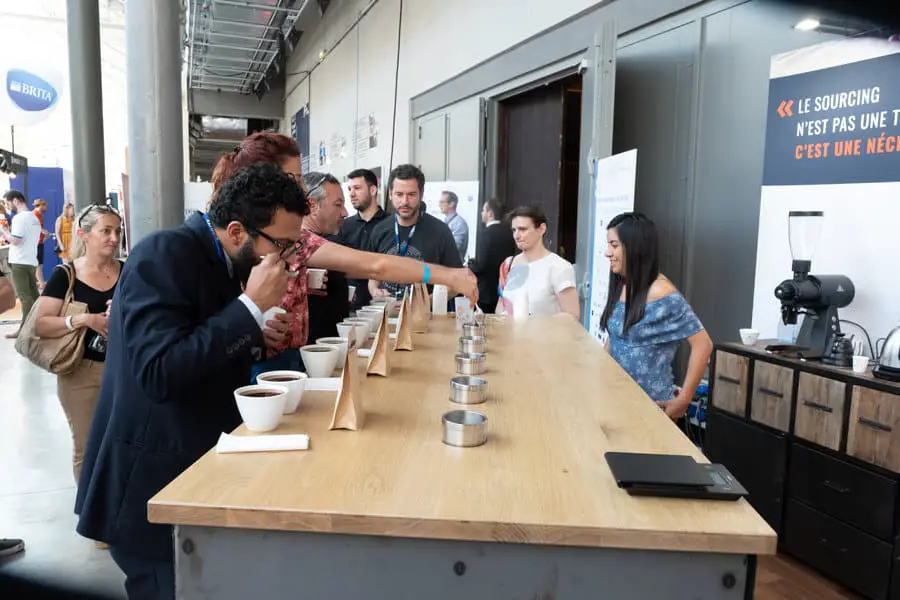
Every coffee on the table needs to be treated the same way without bias. Coffee cupping doesn’t necessarily require special tools, but there are some which make the cupping process easier. Before I get to my list of equipment, my number 1 tip is:
Start With an Open Mind
This is the number one tool for the job. Objectivity is necessary to allow each coffee to compete by merits. As mentioned before, one would also need scientific skills among them the ability to make right and equal measurements, and the ability to prevent cross-contamination between the coffees during the process
A Burr Grinder
The grinder is important for taste consistency. Before grinding your next samples, you should take a some coffee from your next sample and run it through the grinder to remove any leftover grinds from the previous samples coffee. If the samples are mixed then you will not get an accurate taste profile.
Timer
A accurate timer is also of great importance; when you pour hot water into the grounds the steeping process kicks off, and the coffee goes through many changes from the time its the coffee until the time it is sampled.. Experts coffee tasters know that it is essential to assess each coffee from the beginning of the cycle to the end.
Weight Scale
Having an accurate scale for consistency is imperative because if each sample has a different amount of coffee and/or water the taste can drastically different. It doesn’t have to be the fanciest scale but it does need to be consistently accurate.
Cupping Spoons
Professional cuppers also use unique silver-coated spoons for tasting. The reason is that the spoons’ design and shape enable fast slurping action while the silver plating minimizes taste-alteration in the coffee samples. Spoons made of steel may change the coffee taste even though subtly.
4 Cupping Bowls
Before getting to slurping and tasting you will need coffee mugs or bowls for holding the brewed coffee. The cups should be 7oz and the same make and size to maintain consistent temperatures.
An electric water heater
A kettle capacity of about 64 ounces or more because you cannot run out of water before the bowls are full.
Good To Have but Not Essential
2 Glasses for Rinse Water
These come in handy when washing cupping spoons during the procedure.
Cupping Forms
It would help to document your findings when evaluating the coffees. You might not need this in a home cupping but taking notes never hurts. It helps concise and clear during the whole process.
Sample Trays
You need a sample tray for holding your different coffee samples. Sample trays are usually available on Amazon at super low prices.
Four Silver Plated Cupping Spoons
You can look like a Pro … or make them think you have gone completely mad! But its good to have a nice set of spoons!
Coffee Cupping Step by Step Tutorial
1. Choose Fresh Roasted Coffee
Choosing coffee samples is a big part of the cupping process. The more coffee samples you plan to cup, the more cupping tools you will require.
Beginners ideally start with 3 or 4 coffee samples. Professional cuppers may want to evaluate different coffees from a particular region to find out their differences and similarities.
If the purpose of the process is to find the best samples, then one may end up testing more than eight samples at once.
Other times, one may want to taste different coffees from various regions that may have similar flavors. The purpose of such cupping is to find a set of back up beans for the future if the current variety goes out of season.
If your whole cupping experience is to satisfying curiosities from previous cupping notes, then you can get coffee samples based on their reputation. Cupping would be a time to taste and look for yourself and not just believe what someone wants you to think.
2. Flush the Grinder
Flushing the grinder is necessary to remove all grounds from the previous coffee you used. Flushing is done by running a little amount of the first coffee through the grinder and discarding it. It is a purification procedure to be sure that you only taste the flavor of the coffee sample you are evaluating.
3. Run 9g of the First Sample
Set the grinder to a medium coarse setting, and grind 9g of the first coffee sample. Store the grounds in one cupping glass and label it. You can either hide the label under the cup so you don’t know what coffee you are cupping or on the side so everyone has an idea of what coffee it is.
4. Smell the Aroma of Dry Grounds
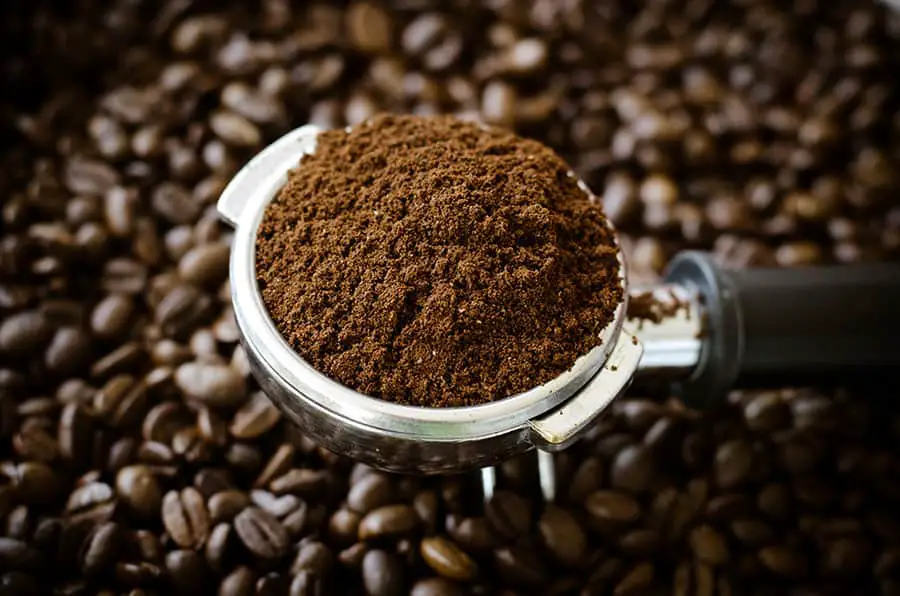
Put your nose close to the coffee and smell the dry grounds, noting the distinct aromas. You can better judge the smell by opening the mouth (not sure of the science behind this) when sniffing the grounds. Just write down whatever you smell; there is no perfect or wrong answer. Repeat the same process with the remaining samples as well.
Remember to prime the grinder each time you switch to another coffee sample. The cupping glasses holding the grounds need to be slightly far apart from each other.
5. Start the timer and add hot water
First, heat water to about 195 – 205 degrees Fahrenheit and pour 150ml or 5oz of the water to each cupping glass. Fill the spare glasses with hot water and place in it your cupping spoons.
6. Break the Crust of The Coffee
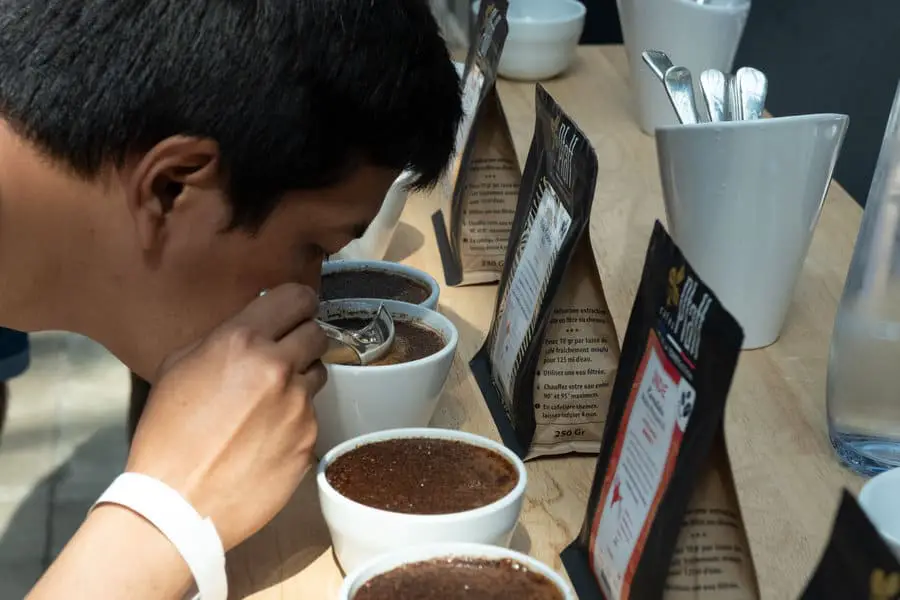
After 4 minutes pass from the time you added hot water to the grounds, break the crust using the back of the spoon. Doing this helps to release aromatic gasses.
Make sure you put your nose close as to the grounds as possible but not touching, inhale and smell the aroma as you remove the crust on each sample. Rinse the spoon in hot water, or use a new spoon for each coffee.
7. Remove the Broken Crust
Move the spoon in a circular motion to remove any grounds floating on the surface. It helps to prevent you from drinking coffee grounds later on. By moving the coffee grinds on top to the coffee bowls will help to rid most of the grounds.
Let the coffee site for about 8 minutes in order to cool down a little before you start tasting the cups. With hot coffee, it can be impossible to pick out all the flavors.
8. Start Tasting
Scoop a spoonful of each coffee and slurp it quickly. The process helps to aerate the coffee so that it coats your palate to allow you to taste more flavor and aroma.
Rinse the spoon in the cup of hot water before switching to another coffee. You don’t have to swallow- spit the slurps into a jug so that you don’t drinl to much coffee (and caffeine) during the cupping.
9. Write down your findings
Note down important points about the flavor, aroma, and texture for each cups, and details about the differences between the cups.
10. Do another tasting round
After tasting all the cups, go around again at least once more. This second round of tasting helps to find details and differences that you might have missed the first time.
Cliff Notes Version
- Choose Fresh Roasted Coffee
- Roast the Coffee Samples
- Flush the Grinder
- Run 9g of the First Sample
- Smell the Aroma of Dry Grounds
- Start the timer and add hot water
- Break the Crust of the Coffee
- Remove the Broken Crust
- Start The Tasting
- Write down your findings
- Do another tasting round
Final Thoughts
Coffee cupping helps to better understand the aromas and flavors in a mug of coffee. It helps to understand the impacts of processing and roasting on the final taste and pinpoint a coffee’s country of origin. But this skill takes time to sharpen, the more you do it, the better you get at it.
If you want more information or if you wan to go more in depth on coffee flavors. You can check out recent data from the World Coffee Research that identifies 110 flavor, aroma, and texture attributes present in coffee, and provides references for measuring their intensity.

